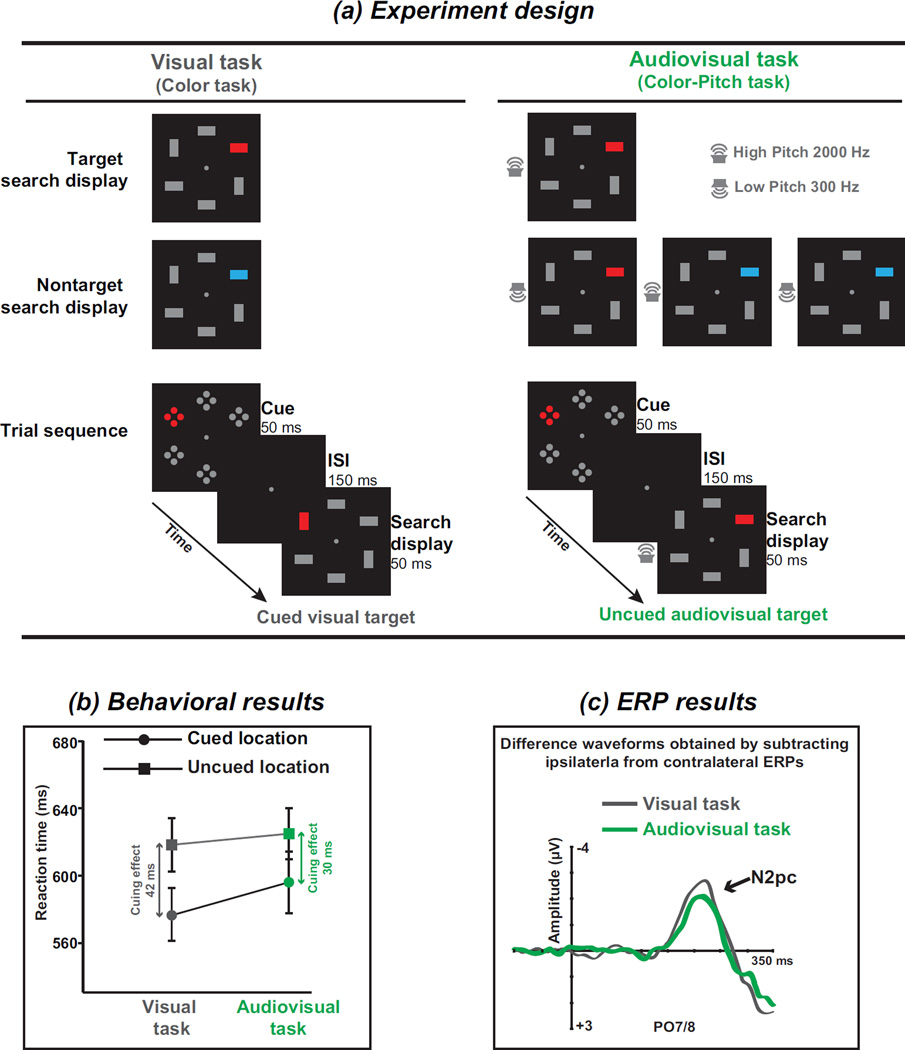Figure 3.
Multisensory templates exert top-down control on contingent attentional capture. (a) The experiment design of the task and trial sequence. The target and nontarget search displays of the two tasks are illustrated. One is the visual task, in which participants were asked to discriminate whether the red bar was vertical or horizontal. The other is the audiovisual task, in which participants were asked to discriminate between vertical and horizontal red bars when they were accompanied by a high-pitched tone (illustrated here as a 2000 Hz tone). Thus, the blue bars or low pitches (the nontarget search displays) were to be ignored. Each trial began with the cue array, which was composed of six elements, each consisting of four closely aligned dots. One element was a color singleton that matched the target color (illustrated here as “red”). The red singleton was presented randomly and with equal probability at one of the four lateral locations but never at the top or bottom locations. The visual target (the red vertical or horizontal bar) and the visual nontarget (the blue vertical or horizontal bar) were presented in the same manner as the cue. In the cued trials, the visual target or nontarget was presented at the ipsilateral (same) side as the cued singleton, while in the uncued trials, the visual target or nontarget was presented on the contralateral (opposite) side. (b) Behavioral results. Spatial cueing effects, which were calculated by subtracting the reaction time for the cued targets from that for the uncued targets, were found in both the visual and audiovisual tasks. More interestingly, the amplitude of the spatial cueing effect in the visual task was larger than that in the audiovisual task. (c) ERP results. The grand average ERP measured at the posterior electrodes PO7/8 contralateral and ipsilateral to the location of a target-color singleton cue. The difference waveforms that were obtained by subtracting the ipsilateral from the contralateral ERPs are illustrated separately for the visual (gray) and audiovisual tasks (green). The N2pc is marked and is an enhanced negativity that emerges approximately 200 ms after the onset of the target-color singleton cue. The results revealed that the amplitude of the N2pc component was larger in the visual task than in the audiovisual task. Adapted with permission from the corresponding author (Matusz and Eimer, 2013). Copyright © 2013 Society for Psychophysiological Research.

